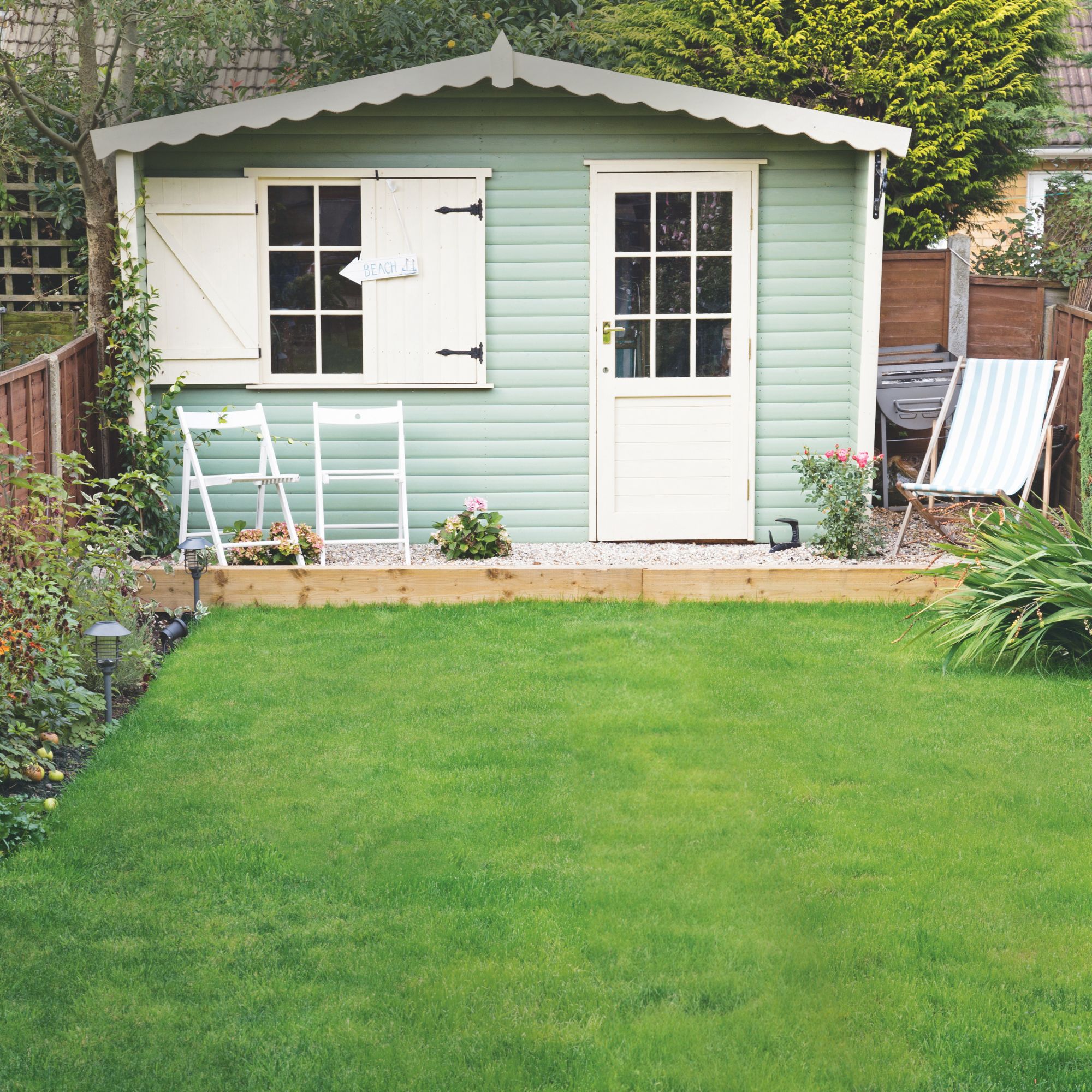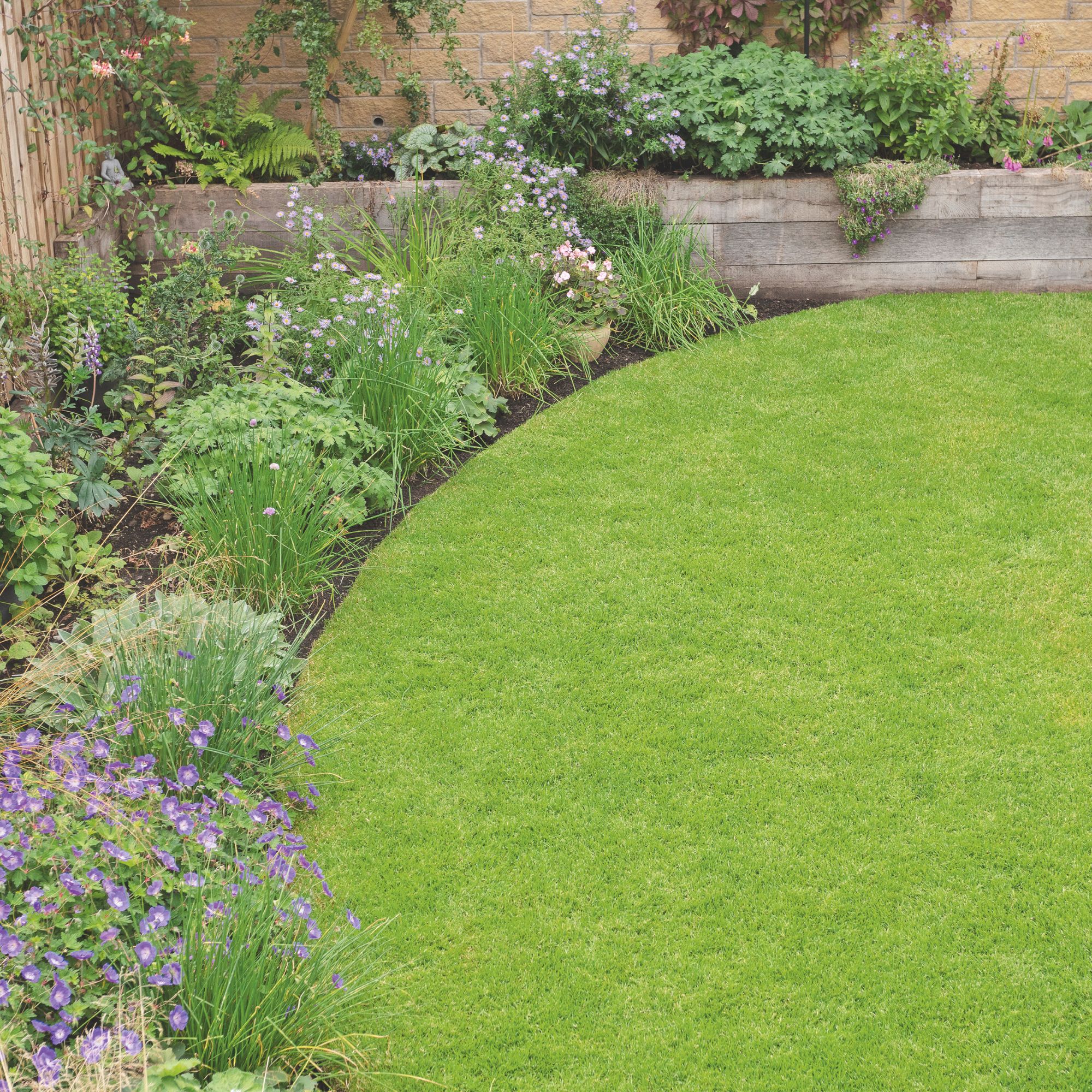
Right now, many gardeners are looking out of their windows and passing a sharp eye over their lawns. If that sounds like you and you’ve spotted that your lawn looks a little worse for wear after a busy summer, you'll want to know if you can sow grass seed in November to restore it to its former glory.
One of the best lawn care tips you should have in their back pocket is sowing grass seed every year. This grass seed will provide the extra oompf needed to bring your lawn ideas to life and reward you with healthy and luscious grass. But in a rush to get your garden ready for winter, you may have forgotten this essential task.
As Chris McIlroy, lawn expert at The Grass People, explains, ‘The best time to sow grass seed in the UK typically runs from April to October when temperatures are consistently 8-10 degrees or higher, which is essential for germination.’ But if you’ve just missed the boat, we’ve asked the experts whether you can still sow grass seed in November, too.

Things to consider if you want to sow grass seed in November
On paper, November isn’t the right time to sow grass seed. But when you read between the lines, it seems as though there is a chance that you could get this job ticked off your to-do list before the winter months really set in. However, there are a few things to consider if you want to sow grass seed in November:
1. You need to check the temperature
Grass seed requires very specific temperatures to germinate, making sowing in November tough. If you want to try, you need to look at your area's weather forecast and see what the next few weeks look like before deciding whether to add sowing to your list of garden jobs in November.
Chris says, ‘To sow in November, it’s important to monitor both daytime and nighttime temperatures in your area to ensure they stay above this threshold.’ If we have an unseasonably warm November, you can sow grass seed. If temperatures regularly dip below 5-8℃ at night, you won’t be able to.
If you’ve already experienced the first frost of the year - or you know it’s on the horizon - it’s not worth sowing grass seed in November, so best to hold off until the weather warms up.
John Marshall, Landscaping expert at Wenningdale Escapes, explains, ‘Whilst you won’t get as high a percentage surviving if you sow in November, you will help thicken up the sward. Avoid doing it in the middle of winter when hard frosts might affect the seed.’
If you wait until spring, you can instead focus on storing your grass seed properly over winter.

2. You should buy the right type of grass seed
You might not realise there are hundreds of different types of grass seeds out there, from Creeping Red Fescue to Smooth Stalked Meadowgrass. These different types of grass also germinate at different temperatures - and this can work in your favour if you want to sow grass seed in November.
Grass seeds with a high fescue mix tend to germinate at higher temperatures (around 15°C), so they're best avoided if you're looking to sow in November. Instead, Chris suggests, ‘Use a grass seed mix with higher perennial ryegrass content, which is more likely to germinate in cooler conditions.’
Just make sure that you precisely follow the instructions for this grass seed. If you don’t, you may find that it doesn’t have the effect you were hoping for.
3. You'll need to prep your soil first
As it’s so difficult to sow grass seed in November, your chances of success may be slim. But you can improve your chances by prepping your soil and giving it the TLC it often needs at this time of year.
Chris says, ‘It needs to have moisture but not be waterlogged and make sure you clear all debris, weeds, dead grass and fallen leaves. You should also gently aerate your lawn to improve drainage and airflow.’
But that’s not all you can do to prepare your lawn for this late-season process. ‘Using a pre-seed fertiliser will give seedlings a nutrient boost and help them establish roots quicker,’ adds Chris.
This is readily available and easy to apply, but in most cases, you’ll need to apply this pre-seed fertiliser a week before sowing your grass seed.

4. If in doubt, focus on protection instead
Even with the above taken into consideration, there’s a high chance that you still won’t be able to sow grass seed in November. Ultimately, if the weather doesn’t play ball, there’s not much point in trying - but that doesn’t mean you can’t give your lawn some winter love.
Chris says, ‘In the meantime, consider feeding your lawn with a slow-release autumn or winter fertiliser to protect it from winter diseases and frost.’ Then, you’ll know that it’ll be in top form to sow your grass seed in spring.
This grass seed is ideal for colder temperatures and can grow in soil as low as 5°. It also germinates in 14-30 days, so you can beat the frost.
If you want to sow grass seed in November, aerating your lawn is a must. Thankfully, this lawn aerator is incredibly easy to use.
This pre-seed fertiliser is a must for the colder weather, and contains nitrogen, potassium and phosphorus to gently feed new lawn seed.
FAQs
What is the longest time for grass seed to germinate?
This ultimately depends on the grass seed you’re using. It generally takes anywhere between 10-30 days for grass seed to germinate, which is why it’s so important to choose the right time to sow it.
If you sow grass seed too late in the year, you run the risk of the weather changing and the temperatures dropping before those 30 days are over. This could render your sowing efforts pointless.
Can you lay grass in November?
Although you should aim to lay grass before November (ideally between September and October), you may still be able to lay grass in November if the conditions allow. So, you’ll need to check the weather forecast.
If there are no signs of frost on the horizon, the ground hasn’t frozen, and your garden isn’t waterlogged, it’s perfectly safe to lay grass, and this process should be successful. If you have spotted any of these adverse conditions, though, it’s best to wait.







